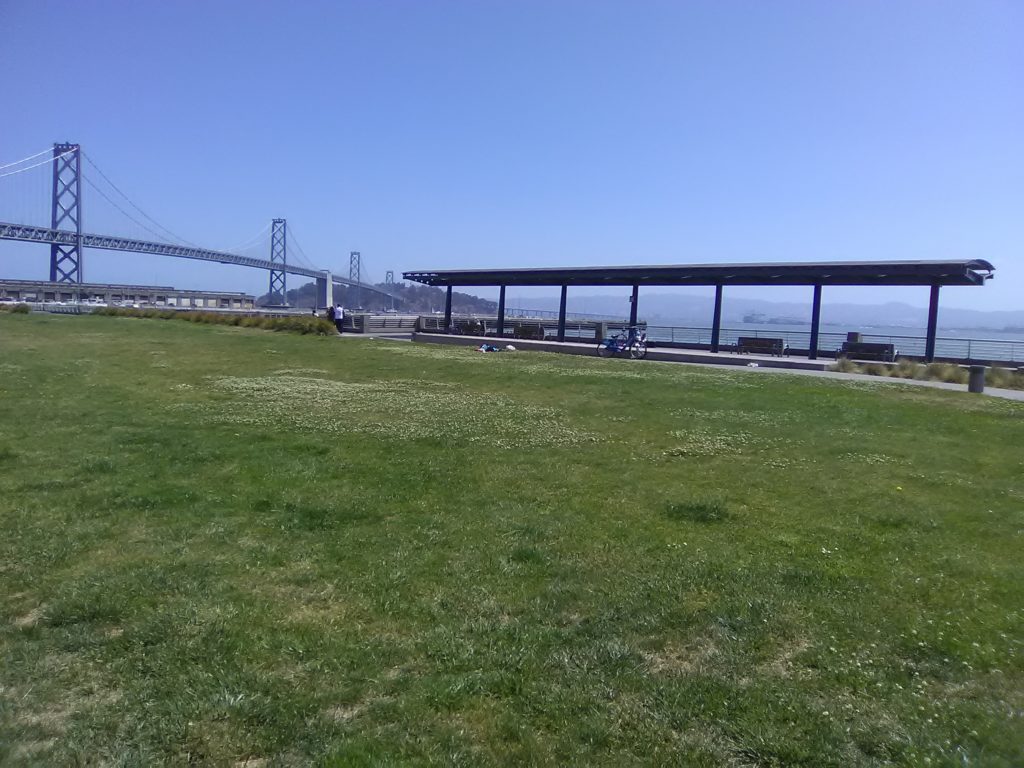By publication time, the votes in last month’s special mayoral election will show that London Breed has prevailed.
As San Francisco’s mayor, she will own the City’s response to homelessness, just as her immediate predecessors, Mark Farrell and the late Ed Lee, did.
That response in the last two years included sweeping sidewalk encampments. These operations, headed by the Police Department, with assistance from the Departments of Public Works and Homelessness and Supportive Housing, forced camp dwellers to move out of their spots, often without any other place to which they could move themselves and their belongings.
In an interview with the SF Public Press, then-candidate Breed put forth the idea of having a City-operated encampment on Port of San Francisco property just south of the Bay Bridge. In theory, the inhabitants would be clustered to where they have access to bathrooms and showers, as well as appropriate social services that would pave their exit from homelessness.
“My suggestion has everything to do with trying to centralize the encampments for the purposes of getting us the time we need, and the resources in one location, to assist the people one at a time, rather than shifting them from one neighborhood to the next,” she told the media outlet.
But her idea has as much stick as carrot: Police would enforce a “zero-tolerance” policy toward other encampments throughout the city, while City workers persuade people living on the streets to move to the ports.
How can such a plan to shelter street people work without evoking memories of FEMA trailers in the wake of Hurricane Katrina, or internment camps for Japanese-Americans during World War II? A proposal from the Coalition on Homelessness, which publishes Street Sheet, might offer some guidance.
For now, the Port-owned properties that Breed is eyeing are still operating, according to the Planning Department’s website. But assuming the open space on Piers 28 and 30 are made available, Breed could look to other cities, such as Seattle and Portland, Oregon, for examples of encampments operating with varying levels of permissiveness. If she follows through with the notion of an encampment also serving as a one-stop, those cities’ models, as well as the Coalition’s recommendations, could foster a workable environment for long-unsheltered San Franciscans.
The Coalition takes the idea of “sanctioned encampments” one step further: Safe and dignified sleep spaces.
There’s a primary distinction between the two terms. “Sanctioned encampments” implies some camps are officially approved while others are not; the people who live in unsanctioned camps risk citations from police and confiscation of their tents and belongings. “Safe and dignified sleep spaces” doesn’t presume other encampments to be illegal in nature.
According to a Coalition policy paper, safe and dignified sleep spaces might be ideal for people accustomed to living outside. These areas could better serve people who can’t handle a traditional shelter’s rules, regulations and regimentation.
Portland’s Right 2 Dream Too apparently resembles that model. Right 2 Dream operates on city-owned property, but is funded by grants and donations. It accommodates up to 100 people nightly, supplying them with bathrooms, showers, sinks and shared kitchen spaces. Residents of this low-threshold camp also agree to a code of conduct, where they forswear violence and discrimination.
Where Breed and Right 2 Dream differ is that Right 2 Dream’s raison d’être is to protect residents from criminalization. It declared in its mission statement, “our purpose is to create a place where unhoused people can rest or sleep without being rousted by police or private security and without being under threat of violence.”
The absence of law enforcement and surveillance in the sleep spaces is also one of the Coalition’s suggestions. Also on the wish list is that police don’t use them as a pretext for penalizing or arresting people who set up camp outside of these areas.
However, Breed told the Public Press that she wants the enforcement of camps citywide to continue, even if waterfront camps are set in place. That would be in line with her previous stances on police-centered approaches to homelessness. After electoral victory was declared for Breed, she also told the New York Times that she would prioritize encampment sweeps, citing public health reasons, adding that she would put “100 to 150 people who are clearly mentally ill” into forced conservatorship. It should be noted that it is unlikely that whatever space is set up would accommodate the thousands in need.
But promising services while conducting sweeps could backfire, said Chris Herring, a Ph.D. candidate in sociology at the University of California, Berkeley.
“Social scientific research is clear that enforcing anti-homeless laws in most cases undermines the efforts of moving people off the streets and into services and lengthens homelessness,” he said.
Self-determination and self-rule on site, as well as fair and equitable shot at permanent housing, are also desired outcomes, according to the Coalition.
The Coalition also noted the autonomy granted to Seattle and Portland camp dwellers. Though managed by a local nonprofit, members of the Seattle camps share in the decision making with staff and resolve internal conflicts. Other camps that are completely led by residents are governed by a council.
Whether San Francisco is ready to accommodate safe and dignified sleep spaces — while including homeless people as stakeholders — could depend on the availability of political will as much as on the availability of open space. Herring said that is the challenge the City must face.
“In a city that has nearly 4,000 people on the street any given night, and over 21,000 throughout the course of the year we are talking about a major effort of creating shelters and sanctioned encampments or those experiencing homelessness that actually serve their needs,” Herring said. “We have a long way to go before we can have a reasonable discussion about policing people for sleeping on the streets when other options are so inadequate or simply nonexistent.”


